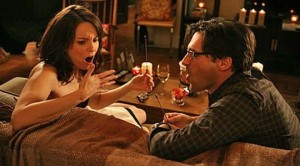What can we say about creativity? Joel Friedlander, a self-published author and book designer who blogs about book design, self-publishing and the indie publishing life at The Book Designer spends a lot of time being creative… and thinking about creativity.
“Where do ideas come from?” he asks. If you don’t know, that’s okay. Friedlander asserts, “nobody else knows either.”
But he does have 18 thoughts for you; please add yours in the comment box at the end of this article..
- You are absolutely unique, and what you have to offer the world cannot possibly be duplicated by someone else. Don’t minimize this.
- Other people may not understand what you’re doing, and this can sometimes be a very good sign. The trick is knowing when.
- Learn when to share an idea with a friend, and when to guard it like the most precious secret in the world.
- If you don’t take credit for good ideas when they simply happen to you, you won’t have to take the blame when you find out your idea won’t work.
- No one else can see what you can see, or has ever seen what you are seeing right now. This scene has never existed before and will never exist again.
- My father told me, “Never be the only one in a room doing something.” I believe he was only partly right.
- Let what you’ve created speak for itself.
- If you don’t believe in your work, support it with passion, champion it bravely, why should anyone else believe in it?
- Don’t let the perfect become the enemy of the good. Being productive in the world requires compromise somewhere along the way.
- Doing something worthwhile takes time—and training and preparation and resolve. You need to have some steel inside to see a big project through to the end.
- Being able to say “yes” to yourself is just as valuable as being able to say “no” to yourself.
- The letdown or “anticlimax” of completion never happens if you are present during the process of creation.
- Tools have never created anything. People create with whatever tools are available.
- Inspiration is beautiful but overrated. Persistance is at least as important, especially if you want to be a professional. Albert Einstein claimed he was no smarter than his colleagues, but that he worked at problems far longer than anyone else.
- Realize that most of the models we have of creativity are media depictions designed to appeal to our fantasies. Really being creative rarely looks the way you think it will.
- There’s nothing more common than “good ideas.” There’s nothing more satisfying than a good idea transformed from a possibility into reality in the world.
- You don’t need wild invention to be creative. William Shakespeare did not invent any of the stories he told in his plays, yet he is regarded as the greatest writer of all.
- If you imagine you can do something extraordinary, you’re more likely to take the steps necessary to achieve it. It’s taking those steps that sets you apart.
Go and create.
Joel Friedlander is also the proprietor of Marin Bookworks, where he helps publishers and authors get to market on time and on budget with books that are both properly constructed and beautiful to read. Subscribe to Joel Friedlander via RSS or E-Mail to get updated with all of the latest content from The Book Designer.




